Blog Archives
The 2021 Kosher rose season is open and I am still underwhelmed – scene 2
Since the last time I tasted and posted notes on the new roses, NorCal was still in the dead of winter/Spring and it was not very Rose weather. At that time, like now, I was deeply underwhelmed and thought it was going to be another stinker of a year for roses. Thankfully, since then, I have had two roses that returned my belief in rose, though that is two out of 48 roses that I have tasted. Overall, the scores are lower than last year and those were lower than the year before, essentially, less happy!
So, this post is scene 2 in the rose open season, and I have now tasted all the roses I would dare/care to try, and FAR TOO many that I did not want to! Sadly, many wines are still not here. We are missing a few new wines from Chateau Roubine, the new 2020 Vallon des Glauges is lurking somewhere in the USA, the 2020 Recanati roses are not here and neither are Yatir or Yaacov Oryah. So, yeah we are missing some that normally come here, but I have tasted almost everything that is here in the USA< outside of some that I could not bring myself to taste, I am sorry.
While rose wine in the non-kosher market is exploding – especially Rose wine from Provence; a wine region of France, kosher roses have ebbed and flowed. Last year, the kosher market for roses slowed down a bit. This year it has returned to absolute insanity and sadly they are all expensive and boring, again, at best.
QPR and Price
I have been having more discussions around my QPR (Quality to Price) score with a few people and their contention, which is fair, in that they see wine at a certain price, and they are not going to go above that. So, instead of having a true methodology behind their ideas, they go with what can only be described as a gut feeling. The approaches are either a wine punches above its weight class so it deserves a good QPR score. Or, this other wine has a good score and is less than 40 dollars so that makes it a good QPR wine.
While I appreciate those ideals, they do not work for everyone and they do NOT work for all wine categories. It does NOT work for roses. Look, rose prices are 100% ABSURD – PERIOD! The median rose price has stayed the same from last year, so far though many expensive roses are not here yet! So far, it is around 22 bucks – that is NUTS! Worse, is that the prices are for online places like kosherwine.com or onlinekosherwine.com, with free or good shipping options and great pricing, definitely not retail pricing.
As you will see in the scores below, QPR is all over the place and there will be good QPR scores for wines I would not buy while there are POOR to BAD QPR scores for wines I would think about drinking, but not buying, based upon the scores, but in reality, I would never buy another bottle because the pricing is ABSURDLY high.
Also, remember that the QPR methodology is based upon the 4 quintiles! Meaning, that there is a Median, but there are also quintiles above and below that median. So a wine that is at the top price point is by definition in the upper quintile. The same goes for scores. Each step above and below the median is a point in the system. So a wine that is in the most expensive quintile but is also the best wine of the group gets an EVEN. Remember folks math wins!
Still, some of the wines have a QPR of great and I would not buy them, why? Well, again, QPR is based NOT on quality primarily, it is based upon price. The quality is secondary to the price. For example, if a rose gets a score of 87 points, even though that is not a wine I would drink, if it has a price below 23 dollars – we have a GREAT QPR. Again, simple math wins. Does that mean that I would buy them because they have a GREAT QPR? No, I would not! However, for those that still want roses, then those are OK options.
Please remember, a wine score and the notes are the primary reason why I would buy a wine – PERIOD. The QPR score is there to mediate, secondarily, which of those wines that I wish to buy, are a better value. ONLY, the qualitative score can live on its own, in regards to what I buy. The QPR score defines, within the wine category, which of its peers are better or worse than the wine in question.
Finally, I can, and I have, cut and paste the rest of this post from last year’s rose post and it plays 100% the same as it did last year. Why? Because rose again is horrible. There is almost no Israeli rose, that I have tasted so far, that I would buy – no way! Now, I have not tasted the wines that many think are good in Israel, Vitkin, Oryah, and Recanati roses. In reality, there is NO QPR WINNER yet, of the 30+ roses I have tasted, not even close, sadly.
The French roses are OK, but nothing to scream about. I still remember fondly the 2015 Chateau Roubine, I tasted it with Pierre and others in Israel, what a wine! I bought lots of that wine in 2016. Last year, the 2019 Cantina Giuliano Rosato was lovely, and the new 2020 vintage is almost as good.
As stated above, this year, I will not be able to taste all the roses like I have been able to do in the past, or get close anyway. This year, travel is not an option and many of the wines are not coming to the USA. So, sadly, all I can post on is what I have tasted. To that point, I have yet to taste the Israeli wines I stated above, along with a few Cali, and the more obscure Israeli wineries that I normally get to when I am there. Still, what I have tasted is not good. A literal repeat of last year, sadly.
So, if you know all about rose and how it is made, skip all the information and go to the wines to enjoy for this year, of the wines I have tasted so far. If you do not know much about rose wine, read on. In a nutshell, 2020 roses are a waste of time. Please spend your money on white wines instead. They exist for a better price, value, and garner better scores. IF YOU MUST have rose stick to the few that I state below in my Best rose so far in 2020 section, right above the wine scores.
Kosher Rose pricing
I want to bring up a topic I have been hammering on in my past posts, price! Yeah, I hear you, Avi Davidowitz, of KosherWineUnfiltered, please quiet down, gloating does not suit you – (smiley face inserted here). The prices of Rose wines have gotten out of control. QPR (Quality to Price Ratio) has become nonexistent, essentially here in the USA, for the kosher rose market. Finally, I am sorry, but I feel that wineries were either hampered in some way with the 2020 rose vintage, or honestly, they just threw in the towel, The 2020 vintage is as bad or worse than the 2019 vintage, and 2019 was the worst one in the last 10 years, AGAIN. The roses of 2020 feel commodity at best, they feel rushed, with no real care, rhyme, or reason. They feel like we have peaked. They are nowhere near the 2015 vintage that put Chateau Roubine on the map for kosher wine drinkers. This year’s crop of roses feel half-hearted pure cash cows, and really without love behind them, AGAIN. I get it running a winery is a tough business, and you need cash flow, and the best cash flow product out there is Rose and Sauvignon Blanc wines. At least there are some good to WINNER Sauvignon Blanc wines from 2020. In Rose, for 2020, so far there is none.
As always, I will be chastised for my opinions, my pronouncements, and I am fine with that. This is a wake-up post, last year there were one or two roses at this point. This year there are none! In the end, I will repeat this statement many times, I would rather buy, the Gilgal Brut, 2019 Chateau Lacaussade, 2020 Hagafen Riesling, Dry, 2020 Sheldrake Point Riesling, 2018 Ramon Cardova Albarino (2019 is not as fun but solid), 2019 Goose Bay Sauvignon Blanc, 2019 O’dwyers Creek Sauvignon Blanc, 2018 Pacifica Riesling, 2019 Netofa Latour White, 2020 Covenant Red C Sauvignon Blanc. There are far better options, cheaper and better options in the world of white wine! PLEASE!!!
I was thinking about going with the title: 2020 kosher Roses suck hard – who cares? Because that is how I feel. This vintage is a massive letdown, AGAIN, worse than 2019, prices are still too high, quality has hit rock bottom, and overall professionalism, IMHO, has gone along with the quality. Wineries have been getting away with less and less quality for years, raising prices, and this is the worst I have seen in the rose market overall. So, yeah, who cares?
Read the rest of this entryKosher wine tastings in Jerusalem
The next wines that I enjoyed on my last trip to Israel and Europe, came after I had finished tasting wonderful wines from the ever capable Yaacov Oryah (head winemaker at Psagot Winery) at one of the newest hip kosher wine bars in Jerusalem – the Red and White Wine bar – kitty-corner from the beautiful Mamilla hotel (8 Shlomo HaMelech Street at the corner of Yanai Street).
After going to see the Kotel (following the tasting at the Red and White bar), I made my way to where I was staying. It was not far from where we would be having the next two tastings, at our friend’s home DD. While, our host was fantastic, the wines were not so much. Much of that was a shocker to us all, because the wines we brought were not lightweights, they just did not show well at all.
There were some winners, a bottle of the epic Von Hovel kosher Riesling – that we will talk more about in a later post, but for now – the notes were very similar and the wine was insane. It was intoxicating (in its flavors) as much as it was intense, showing mineral, sweet notes, and acidity all at the same time.
The real winner of the night to me (other than the epic Von Hovel) was the 4 Vats red which was really nice and a solid QPR wine.
My many thanks to our friend DD for hosting us in his lovely home! To be honest after all the wine tastings I had up until this point, I was done for, so my notes were not very good this time. The wine notes follow below – the explanation of my “scores” can be found here:
2016 Yaacov Oryah Light from Darkness (Blanc de Noir) – Score: A-
This is a white wine made from Yaacov Oryah’s Rhone varietal vineyard, using Grenache, Cinsault, and Mourvedre. The juice of the grapes was pressed out of the grapes with no skin contact. The juice of red grapes is clear until it is left to macerate with its red skins.
Really a fun and unique wine never had such a wine showing red fruit notes in a white wine, showing grapefruit, sour cherry, rich mineral, yeasty notes with lovely minerality, green olives, and saline. The mouth is well integrated with lovely acid, rich peach, lemon and grapefruit with tart citrus, dried orange and more saline and slate galore, with nice pith on the long finish. Bravo! Drink by 2018.
2015 Matar Sauvignon Blanc / Semillon – Score: B+ to A-
The nose on this wine was lovely, showing ripe grapefruit, flint, spice, kiwi, and green notes. The mouth on this medium bodied wine has just enough acidity, showing nice focus with slate, saline, and nice peach, with pink grapefruit, yellow pear, and lovely acid. Drink UP!
2014 Von Hovel Hutte Oberemmel Riesling, Mosel, Gefen Hashalom – Score: A- to A
This was my initial notes for this wonderful wine, without knowing I would taste this very wine in the Von Hovel winery and bring a few home! Stay tuned for that post soon.
A nice Riesling wine, great funk, with rich petrol, honeysuckle monster, with great spice, with heather, lavender, with yellow apple, and yellow plum. The mouth is rich and layered and rich acidity that is insane, with layers of rich blossom honey, and layers of never ending oily texture that is dripping with acid and white peach, lovely funk that gives way to minerality and intense lovely saline, with the sweet notes showing instead of the ripping acid/slate that the 14 Nik showed. Bravo!
Lueria Winery and the latest releases

Well, I have finished all the KFWE posts, and my past personal wine tastings posts, and now it is time to get back to posting about wineries I visited on my last trip. To remind you, I came to Israel for Sommelier 2017, then flew to Paris and back the next morning for the Bokobsa tasting. Upon my return to Israel, I drove north for a day, before coming back to the Jerusalem area, and then flying home. I have already posted all the wineries I visited in Israel’s North, excepting for my visit with Gidi Sayada at the lovely new visitor tasting room of Lueria Winery. We tasted all the new releases and as always, it is a joy to sit down and taste wines with Gidi.
The wines that Gidi makes use the grapes that were planted by his father, Yosef Sayada some 22 years ago. The vines were planted on the hills surrounding Moshav Safsufa. Interestingly, Safsufa is an Aramaic word meaning – late ripening fruit. The burial place of the revered kabbalist Rav Yitzchak Luria, who was one of the foremost Kabbalist experts in his time, overlooks the vineyards. It is in his honor that the winery is called Lueria Winery.
Lueria Winery has been growing slowly but surely, going from a few thousand bottles in 2006 to more than 100K bottles in 2016. Most people would not think that Lueria Winery is pumping out that much wine, but since Gidi started making wine, after learning winemaking in Israel, and cutting his teeth with Tal Pelter of Pelter Winery (not kosher) and Matar Winery, it is clear to see that he has found his own way now. With the abundance of his father’s grapes to choose from, some 45 acres, comprising many classic varietals, like Cabernet Sauvignon, Merlot, Cabernet Franc, along with some more Mediterranean varietals, like Syrah, Sangiovese, Barbera, and Roussanne.
This winery, like many throughout Israel, is not afraid to make half of their wines – white wines. Why? Because contrary to the USA palate, Israelis have finally found the love for all things white and rose! Sadly, this year, Gidi did not make a rose. In its place, he started a new label, the 2016 Roussanne! Also, gone is the pure dry Gewurztraminer that we had a few years here and there. Now, he is making some dry Gewurztraminer and placing it into the lovely, Lueria White wine. The white varietals used in the winery are Gewurztraminer, Pinot Grigio, Chardonnay, and Roussanne. There are very few wineries in Israel making Pinot Grigio, the ones I know of are Dalton (a five-minute drive from Lueria Winery), Lueria Winery, and Yarden Winery. Each wine is stylistically different from each other. The Dalton PG is all about acid and fruit and is light on the mineral. Shockingly, the Yarden PG is less about fruit and more a balance between the fruit and mineral. Finally, the Lueria Winery PG is smoky and mineral rich, with nice fruit as well. Get them all and then taste them in a blind tasting!
The red wine labels have been cleaned up, in both appearance and names. Now it is just two blends Rosso and Terrace at the first level, followed by two single varietal dominated wines, Shiraz, and Cabernet Sauvignon. With the Grand Vital being the flagship wine of the winery, which is a blend of the best barrels from each vintage. Its parts change each year but it’s mostly dominated by Cabernet Sauvignon, along with some Merlot and Cabernet Franc. Sometimes Syrah is added as well, but in the past many years that has not been the case. I think the streamlining and simplification of the labels, along with cleaning them up a bit as well, really makes for a lovely lineup of wines.
Kosher Rose wine options for 2016 – as the weather heats up
Rose wine in the non kosher market is exploding – especially Rose wine from Provence; a wine region of France. Sadly, in the kosher wine market – that is not quite the case. I did not stress my previous statement with a suffix of AT ALL, even though I am not allowed to open a bottle of rose on my Shabbos table with guests – why? Well that is simple – no one will drink it!!
Still, Gary Wartels of Skyview Wines told me recently that there is an uptick in interest, especially in the newly released Vitkin Rose 2015. I need to get back to that wine and other shmita wines, but first we need to talk about what Rose is and why the current craze in the non kosher market is just an uptick in the kosher.
Wine Color
Well simply said, rose is a wine that can best be defined as the wine world’s chameleon. Where white wine is a pretty simple concept – take white grapes squeeze them and out comes clear to green colored juice. Yes, white grape juice is clear – well so is red grape juice, but more on that in a bit.
White wine is not about color – almost all color in a white wine comes from some oak influence of some sort. So, an unoaked Sauvignon Blanc or Pinot Gris can sometimes look almost clear, depending on the region and how the wine was handled. Now oaked Chardonnay of course is what most people use as an example of a dark white wine. As the Wine folly linked above states, different wine regions oak their Chardonnay differently and as such they are sold with different hues from the start. With age – the wine patenas even more and the gold moves to auburn.
The only real exception to the stated rule above – that white grape juice without the influence of oak is somewhere in the clear to green color spectrum, is – orange wines. We have spoken about orange wines – mostly thanks to Yaacov Oryah. Outside of Yaacov’s work there really is no orange wine in the kosher world to speak about. Orange wine is made exactly like red wine, which means that the clear grape juice is left to sit on the yellow-ish to dark yellow grape skins (depending upon what varietal is used to make the orange wine).
Red wine juice – straight from the grape comes out the same color as white grapes. You see the juice from grapes is mostly clear to greenish in color. The red wine color comes from macerating the juice on the grape skins. The longer the juice sits on the grape skins (wine must) the redder in color the wine becomes until it reaches its maximum red color potential.
The only real exception to the rule of a grape’s juice color are the Teinturier varieties. The grapes are called Teinturier, a French language term meaning to dye or stain. The list of grapes whose juice is actually red, are long – but the list of kosher wine options that is a wine made from these grapes – is the Herzog Alicante Bouschet. The Gamay de Bouze is not a normal Gamay grape, it is one of those grape mutations that are very red in nature.
Rose wines are the in between story – hence the chameleon term I used above.
Rose Wine
Rose wine is made in one of three ways. I will list the most dominant manners and leave the last one for last.
Maceration:
This is the first step of the first two options and the only difference is what you do with the rest of juice after you remove it? You see, as we stated above, the color of the juice from red grapes is clear to green and for one to get the lovely red hues we all love from red wine, it requires the juice to lie on the grape skins – AKA maceration.
The rose hue depends on how long the juice macerates. I have heard winemakers say 20 minutes gives them the color they like, and some say almost half a day or longer. The longer the juice macerates the darker the color. While the wine is macerating, the skins are contributing color by leaching phenolics – such as anthocyanins and tannins, and flavor components. The other important characteristic that the skins also leach are – antioxidants that protect the wine from degrading. Sadly, because rose wines macerate for such a short period of time, the color and flavor components are less stable and as such, they lack shelf life – a VERY IMPORTANT fact we will talk about about later. Either way, drinking rose wine early – like within the year – is a great approach for enjoying rose wine at its best!
Now once you remove the liquid, after letting it macerate for the desired length of time, the skins that are left are thrown out or placed in the field to feed organic material into the vines. This is a very expensive approach indeed, because the grapes are being thrown away, instead of doing the saignee process which is described in option #2. This approach is mostly used in regions where rose wine is as important as red wines, like Provence and Languedoc-Roussillon. Mind you, the grapes used in this method are most often picked early, as they are being used solely for making rose. Read the rest of this entry
A wonderful horizontal tasting of older kosher Cabernet Franc wines
This past weekend saw us enjoying a lovely round of Cabernet Franc wines and our patented Herb encrusted gefilte fish loaf, which was followed by sausage stew. What can I say, I have a true soft spot for GREAT Cabernet Franc, and thankfully there are a few VERY good options. When I think of Cabernet Franc, top on my list is Four Gates Winery followed by Ella Valley Winery. After that, there is Hagafen Winery, Carmel Winery, Psagot Winery, and the new comer is Teperberg Winery’s 2011 Cabernet Franc – that is off the charts!
Many have spoken about the demise of Merlot and the rise of Pinot Noir from what is now called the “Sideways Effect.” Miles (the movie’s protagonist) proclaims his hatred for Merlot and his love affair for Pinot Noir, in the movie Sideways. While this has been confirmed by many trusted sources, what has been glossed over is the hammer blow that Miles delivered to Cabernet Franc. In the very same movie, Miles is poured a glass of Cabernet Franc, he smells it, sips it, and ceremoniously pours out the glass into the spit bucket, while dropping an anvil on all Cab Franc fans, as he states “”I’ve learned never to expect greatness from a cab franc, and this is no exception”. “Ouch!” This is the exact kind of snobbery and lack of appreciation for the varietal’s unique qualities, mentioned earlier, that has kept the masses away from Cabernet Franc. In the end of the movie, we find Miles drinking his vaulted and prized bottle of 1962 Cheval Blanc, which is composed of 66% Cab Franc, 33% Merlot, and 1% Malbec! We do hope that the irony is not lost on you, as it was certainly not lost on the producers!
Ask a winery why they do not sell Cabernet Franc, and they will start by disparaging it as a blending grape, and then add that it is not a noble variety. What’s so funny is that the vaulted Cabernet Sauvignon – the archetype noble grape, is actually a cross between Cabernet Franc and Sauvignon Blanc – go figure! You see, perception (and a lack of marketing) is reality, and while many have complained that Cabernet Franc is a thin and green flavored wine, that has more to do with the vintner’s and vineyard manager’s incompetence than it has to do with the grape. Cab Franc needs a fair amount of heat to bring it to its true potential, but too much heat, and it gets toasted. Poor viticulture is the grape’s Achilles Heel. Still, the wine’s olfactory charm and bright fruity composition makes it a clear contrast from today’s fat and fruit forward wines. Sure, you find wineries styling the poor Cabernet Franc grape into a Cabernet Sauvignon by suffocating it in oak and tannins. However, the wine’s true beauty lies in its clean lines, bright red fruit, and it’s crazy floral/fruity nose, that may be accompanied by some bell pepper, which causes many a wine critic to turn up their noses to this wonderful wine.
Even further is that many a winery, including one from the tasting will say that they would rather have a Cabernet Franc that lacks green notes than one that shows it. Why? Because truly Cabernet Franc started as a grape grown in France, and in a region that does not get very warm, namely Bordeaux and the Loire Valley. Napa and Israel, on the other hand, do get warm, and some in Napa would like their wines to taste along the lines of their preferences, namely less green notes. Green notes normally arise from the lack of ripeness, think of vegetal notes you sometimes taste in fruit when the fruit is less than ripe. As the fruit ripeness, the Pyrazines within the grapes are killed off by the sunlight and ripe flavors appear. I love green notes in Cabernet Franc and am not turned off by them, in my opinion of course.
That said, Hagafen works hard to get the green out of the Cabernet Franc, saying the green is seen as a flaw and they work hard to make sure it does not appear in the wine. Sure, many wineries feel the same way, but Franc is green – it is the definition of the grape – but this is the new century and I guess it is time to evolve the Franc ideal, but in my books it is wrong.
The interesting fact is that Ella Valley is really the hot bed for all things kosher and Franc and I was happy to showcase two very different styles of the wine from the same winery. The 2006 Vintage is all fruit and green, while the 2009 vintage is all about the tannin and spice and fruit, with the fruit taking a back stage presence. That will change as the wine evolves and the tannin and mineral recede to show the fruit, but for now the two wines could not be more different – which is why it is so IMPORTANT to age Franc!
If you are interested in getting into the Franc scene, the best options now are:
- The 2010 Carmel Cabernet Franc (or the 2009 as well)
- The 2010 or 2009 Ella Valley Cabernet Franc
- The 2009 Gush Etzion Cabernet Franc
- The Teperberg 2011 Cabernet Franc (2010 with its new age label is good enough as well)
Well, here are the wines we had, the crowd was meant to be larger, and I was supposed to get to a Psagot and a Gush, but such is life. The Four gates Francs were not meant to be on the menu – we had them last year, at our previous Franc horizontal. The wine notes follow below:
My wonderful blueberry haze Shabbos
This past weekend I was hanging with EL and MT, those same two of Napa wine adventure fame. It was a true insane blast, and the wine intake was so intense that I had to name this post appropriately. The blueberry reference is an ode to the sheer number of wines we had that were seriously showing blue fruit.
When I think of hospitality so many names come to mind including ER, Mrs. L, Shaindy and Chaim, and now I am happy to add EL and MT to the wonderful list of people who think of others above themselves. I came this shabbos to NY to hang with family and go to two wine events. The two wine events sandwiched a Shabbos so I asked EL if he could handle a madman like me for a weekend! He graciously accepted and now the Shabbos is in the history books and may well go down in annals of mankind as one of the craziest Shabbos that I have had the opportunity to enjoy (though my first Benyo Shabbaton is up there too with the Shirah Boys).
The Friday started with me opening the bottle of Tavel, which while deeply aromatic was a slight letdown with a light and almost lifeless mouth. Still, it had the acid to keep up; this was all while we learned some Yoshua before heading to minyan. El lives in a large Jewish community and the number of synagogues within a square mile of his house, rival the number of museums in all of NY City! Still, we were blessedly spared the walks to those hallowed halls. Why? Think August in Las Vegas and add 90% humidity and you get the picture – AKA felt like walking through swap land – without the swamp!
So, where did we go, well that is the funny thing, if there are tons of options for free standing synagogues in this section of New York, there may well be more options of home bound synagogues! Indeed, people have synagogues in their basements, living rooms, and just about any section of their home that their wives can tolerate (more on that in a bit).
Friday night started in the library room of a beautiful home, 5 doors down from EL’s house. Mincha started at 8 PM and we were done with Mincha and Maariv at 8:45 PM. Heck, where I live, we could still be davening Mincha in 45 minutes! We went home, and even walking the length of 5 homes made you feel like you wanted to jump into a shower ASAP! What heat! Anyway, dinner started with a bottle of 2012 Lueria Gewurztraminer. A lovely wine that was cold and bracing, with enough residual sugar in it to make both EL and his wife happy! From there we moved to two Roses that accompanied a plethora of sushi! Awesome idea, really, clean tasting sushi is a great idea on a hot summer day! The sushi was solid as was CL’s SICK challah that was greatly enjoyed with dips and soup. The Tavel was OK, as said above but the Agur rocked it for me and it was mostly drunk by me as well.
After that we moved to the main course, which was roasted chicken and some incredible Rib Roast! EL begged me to taste some before Shabbos and I knew at that point that this chunk of meat was going to slay it on Shabbos! The roast has something for everyone, it was rare inside and medium rare on the edges. It was herbed to perfection and was so juicy that it screamed to be eaten some more – WOW what a real treat!
At this point I must point out that we had already decanted two wines for the dinner, the newly released 2011 Vignobles David Reserve GS wine and the 2012 Hajdu Cabernet Franc (will probably be blended – but a distinct barrel sample for now). It was at this point that the family bailed and left EL and I to slowly enjoy the two bottles/carafes of wine. That was until Mark came over with two more wines in tow. The wines were the famous 2007 Brobdignagian/Brobdingnagian Syrah – a blockbuster wine we have enjoyed twice, and a 1999 Hagafen Syrah! The wine is a richly layered, concentrated beast that has zero desire to calm down or back-off its no holds barred structure that makes one truly stand up and take notice. Some find it too much, but for me it is a wine created by an unbridled mad genius, with eyes wide open – what a wine! When I saw the hagafen Syrah at Mark’s house before Shabbos I thought there was no way that the wine was drinkable. It turns out that the Syrah was Hagafen’s first and a wine that has truly stood the test of time. Read the rest of this entry

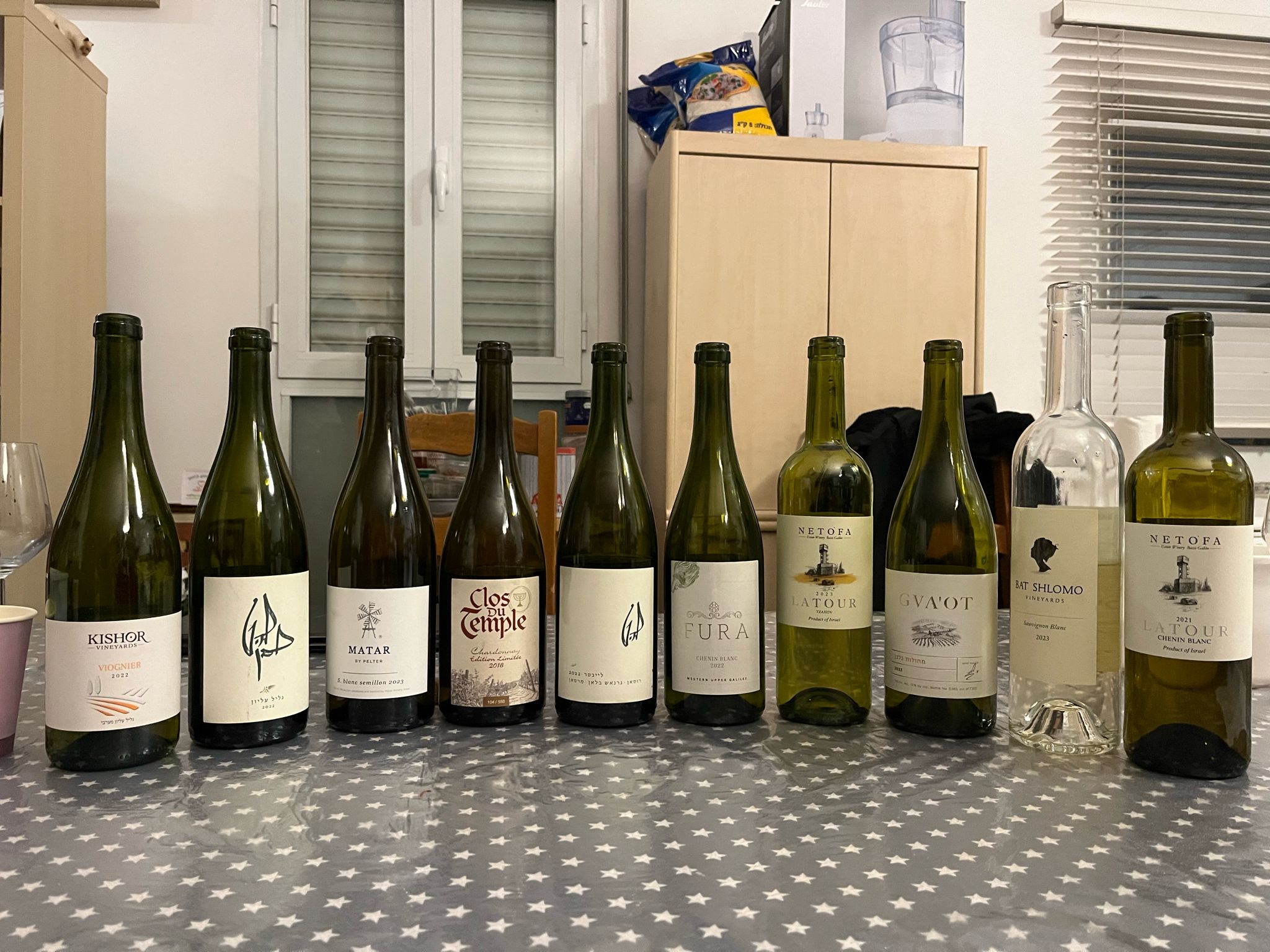
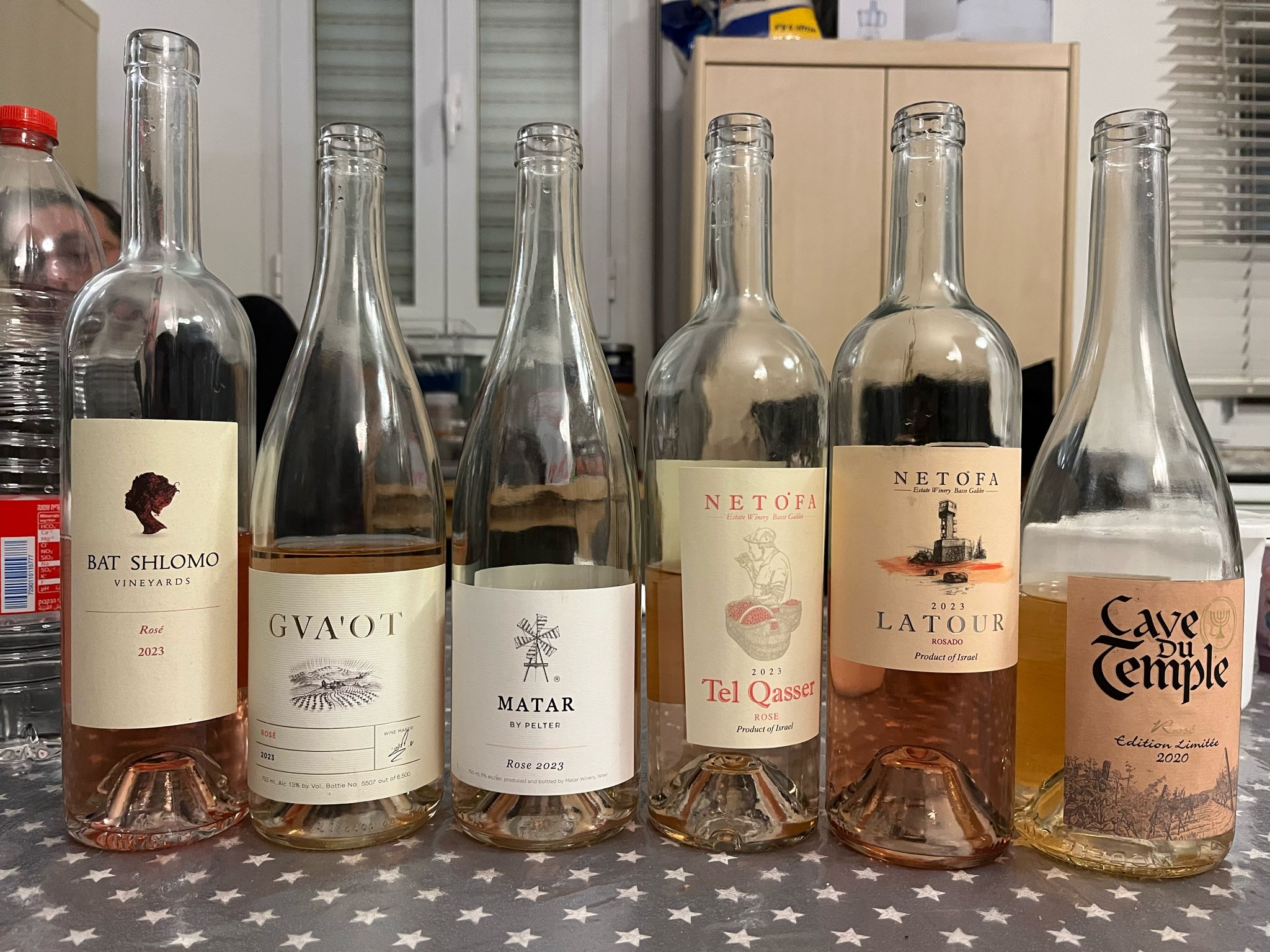
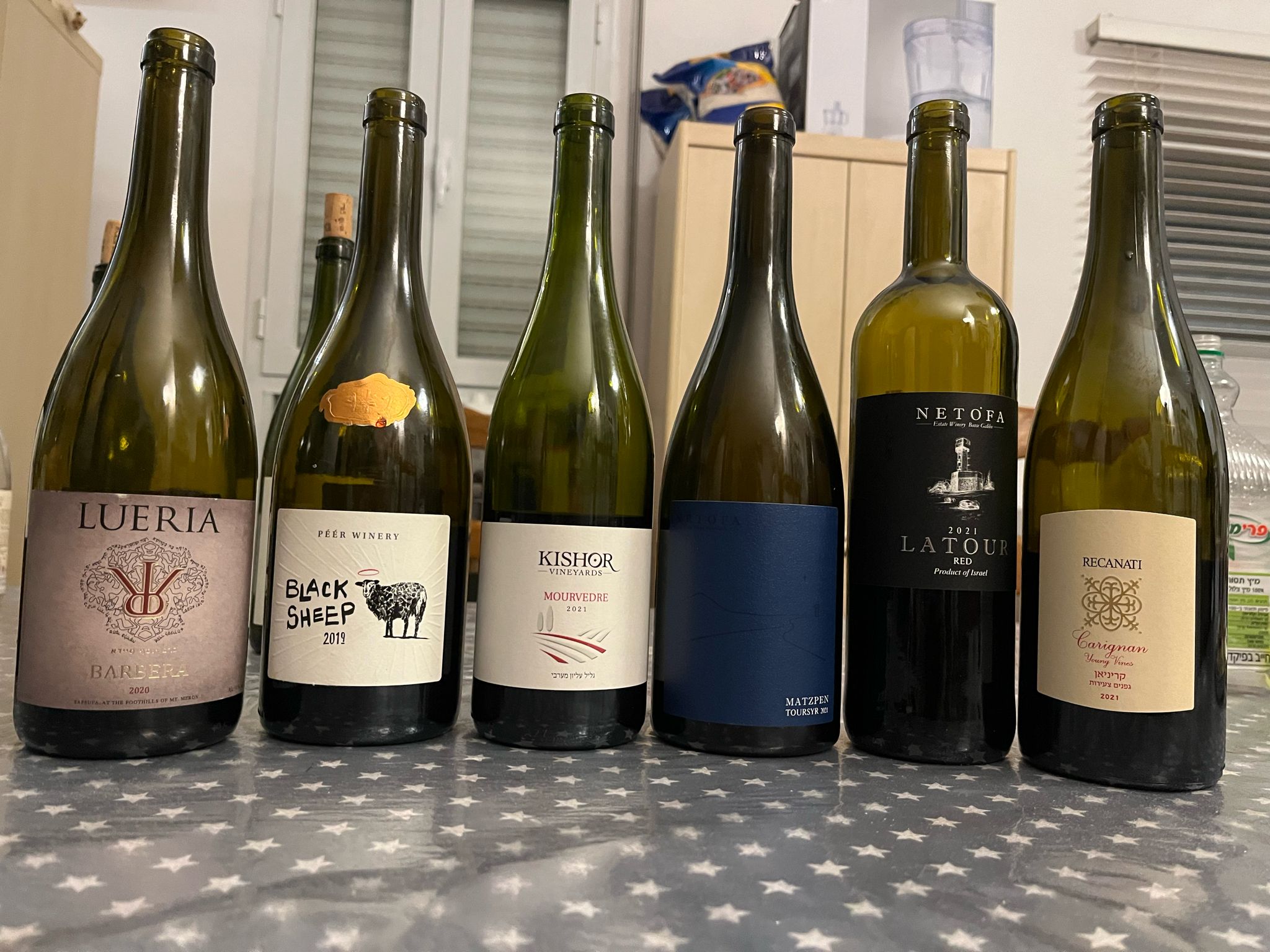


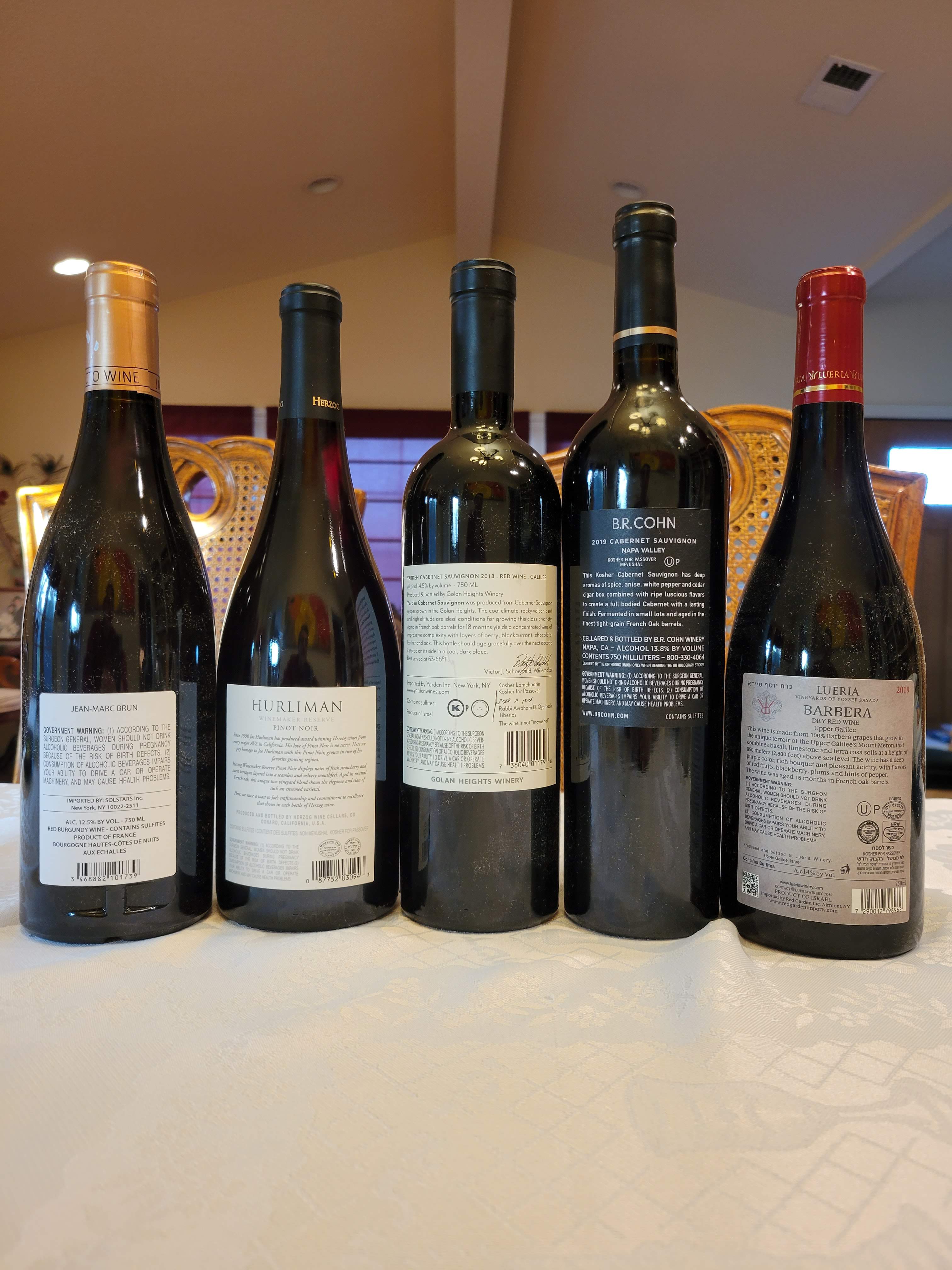

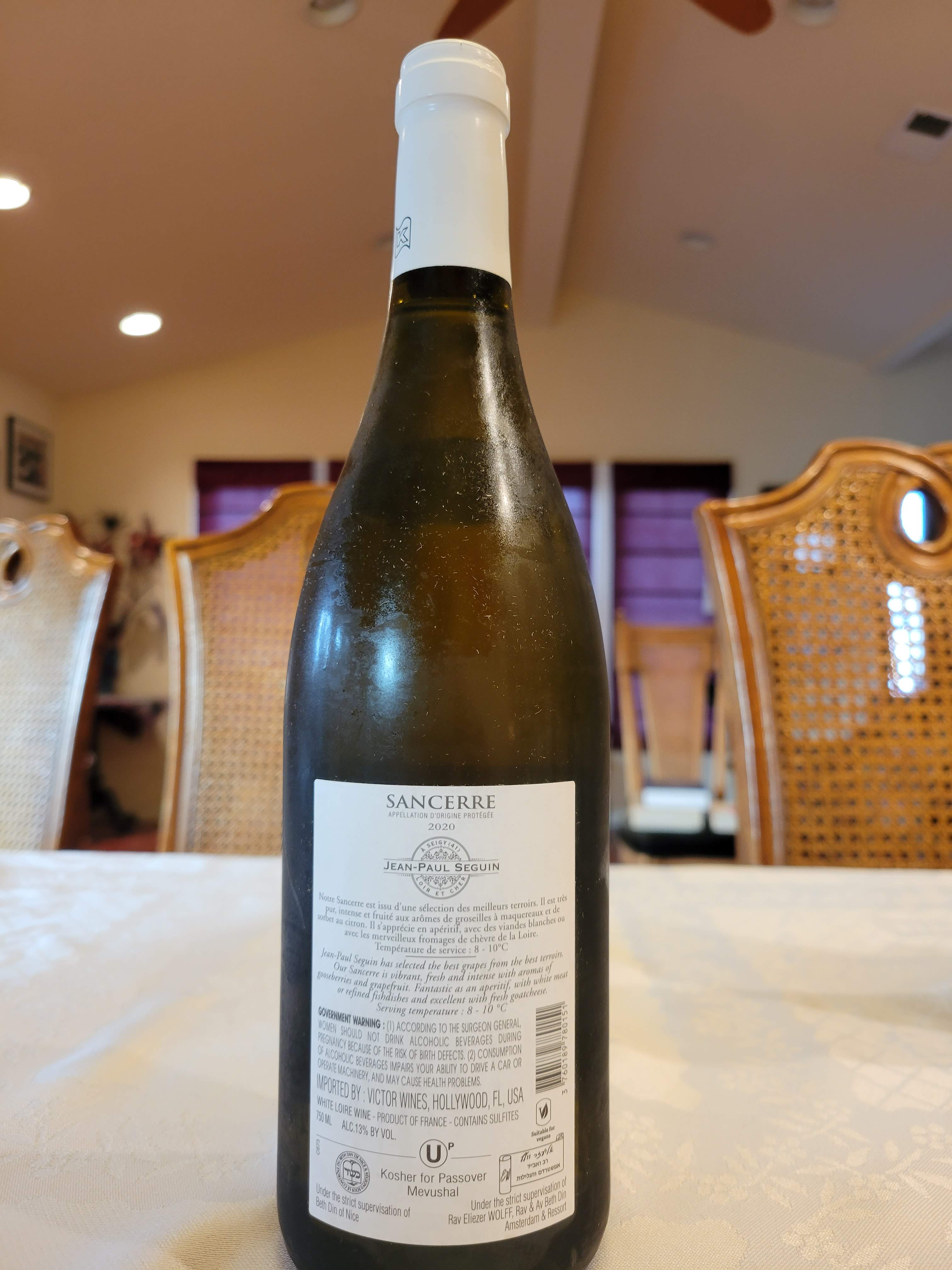
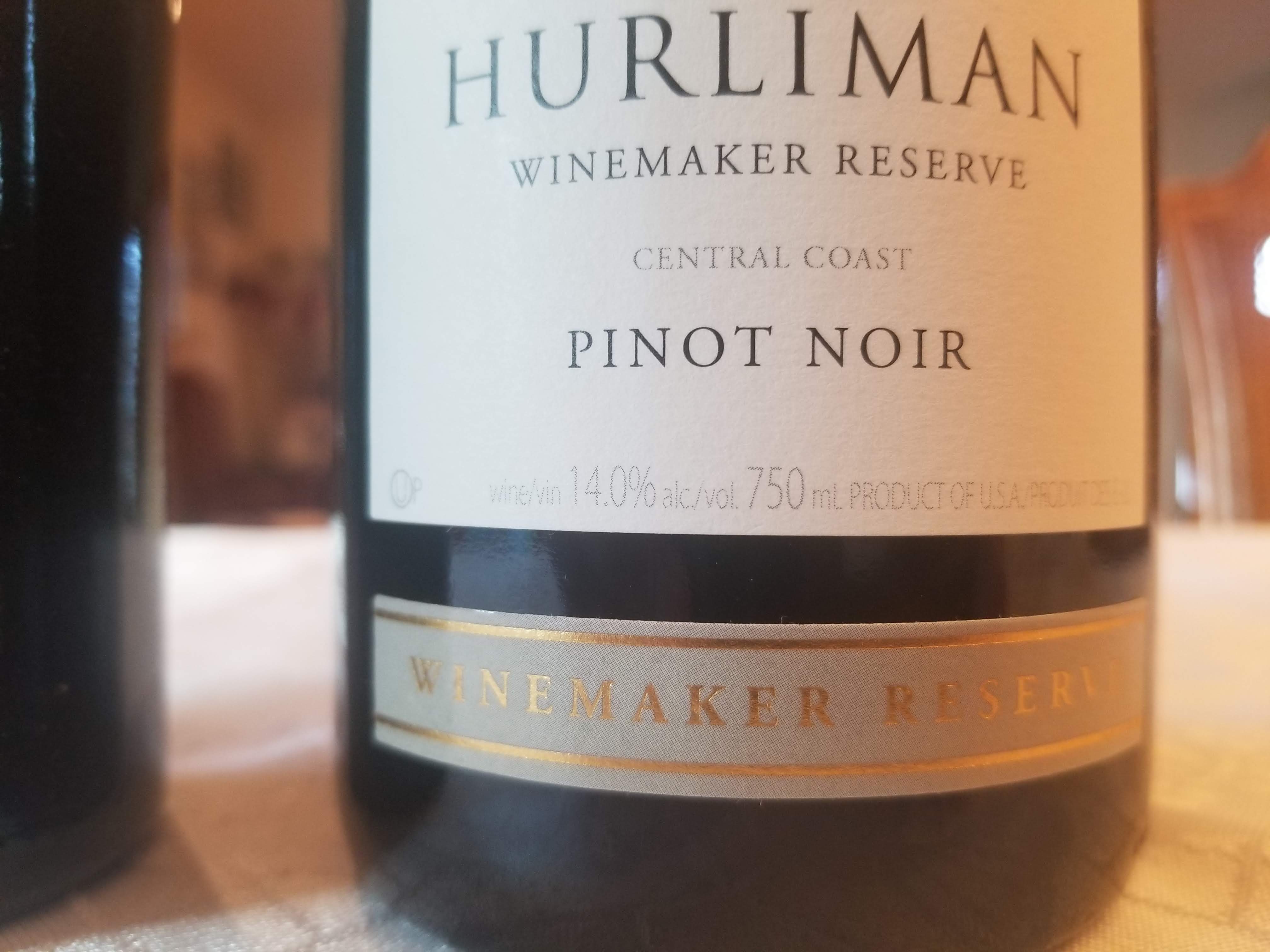








 Well, I am back, landing the day before the Shabbat preceding Shavuot. I was there for my Nephew’s wedding and we stopped off in
Well, I am back, landing the day before the Shabbat preceding Shavuot. I was there for my Nephew’s wedding and we stopped off in 









